Why you should add balance exercises to your life
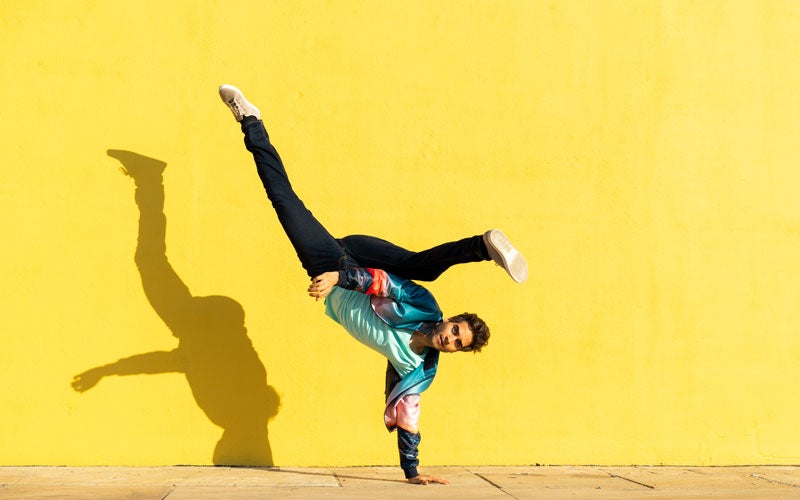 ©Westend61
©Westend61
Balance training strengthens your deep muscles, protects you from injuries, and boosts your performance overall. Here’s a look at the best balance exercises and tools you can use to train your balance.
How does balance work?
Want to try it out for yourself? Stand on one leg, close your eyes, and lift the opposite knee. Things could get wobbly. In order not to fall over, you require your balance. This refers to that coordinative ability that allows us to control the body’s center of gravity and compensate for imbalances.
Several perceptual systems are involved in the sense of balance:
- Visual system: the eyes or vision helps to orient in space.
- Vestibular system: The inner ear perceives rotational movements and accelerations.
- Proprioceptive system: Receptors in the joints and muscles as well as pressure receptors in the skin report changes in posture and position.
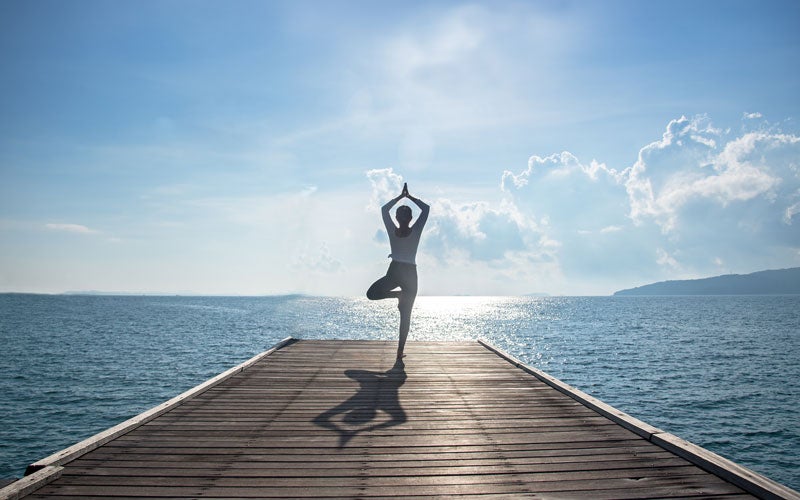
Stimuli that the body perceives via these systems converge in the central nervous system. The brain then sends signals to the muscles so that the body can adapt as quickly as possible – and not fall.
A well-developed sense of balance aids in controlling movements and thus provides security. This ability diminishes with age. The speed at which nerve signals are transmitted from the brain to the body decreases. That’s why older people find it more difficult to stand steadily, to reach, or to hold onto things.
Injuries or illnesses can also limit balance, as can repetitive or one-sided movements, such as sitting and working for long periods of time at your desk. But the good news is: you can (and should) train your balance.
Why should you work on your balance?
Balance exercises promote neuromuscular coordination, i.e. the connection between your brain and your muscles. By training your balance, your muscles learn to react faster to signals from your brain. As a result, you can improve your fine motor and coordination skills.
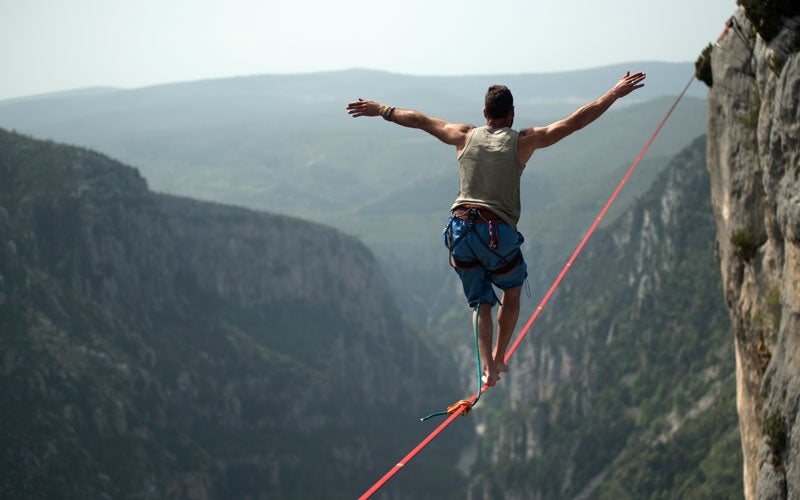
Studies1 show that coordination exercises can help prevent injuries, in places like your knees, and improve your posture. They are extra effective for the deep muscles in your core and around your spine. So they can protect you from back pain in the long term and keep your abs in great shape.
Doing any exercise to improve balance helps you to make your movements more efficient and smoother, which can have a positive effect on your body image. That’ll give you a boost in your everyday life as well as in tons of different types of sports. Your performance will increase, and you’ll see benefits faster!
Effects of balance exercises
There are many good reasons for you to start training your stability and improve balance. Here’s a quick breakdown of the major benefits:
- It helps you stabilize your joints.
- You can correct imbalances and prevent tension.
- You’ll improve your posture.
- You’ll prevent back pain.
- You’ll strengthen the deep core muscles and around the spine.
- You minimize the risk of injury during sports and in everyday life.
- You’ll improve your bodily awareness.
- You’ll maximize your performance.

In addition to your workout, a balanced diet is the foundation for a healthy body into old age. Your organism needs energy – in the form of carbohydrates, fats, and proteins – as building blocks for your muscles. Eating the right amounts of the right foods every day isn’t always easy. Our shakes help get you there: easy to whip up and chock full of great ingredients for more power and balance.
What is balance training?
Balance training involves doing coordination exercises that use instability. For example, standing on an uneven surface or on only one leg. Your body has to compensate for this imbalance.
The goal of balance training is to perform movements in a controlled manner despite this imbalance and to keep your body steady. In addition to maintaining body tension, you need to concentrate. You can only stay centered if you are focused on the task at hand. Balance exercises are not only physically but also mentally challenging.
Who is balance training right for?
Whether you’re a kid or well into your 60s, balance training knows no age limit or fitness levels. Our coordination skills diminish over the years, making coordination exercises increasingly difficult, but not impossible. We can train our sense of stability and thus counteract or prevent age-related balance problems and weaknesses.
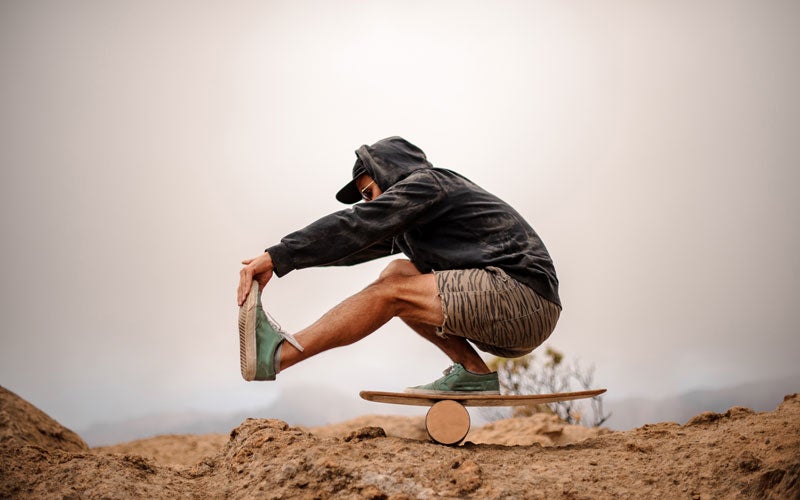
The same applies to athletes who want to become better in their field. Poor balance can often be a limitation or Achilles heel. But if you work on it, you’ll certainly become better at running, weight training, or yoga.
The bottom line is that balance exercises are worthwhile for anyone who wants to achieve more and protect themselves from injury.
Balance exercises without equipment
Go for it! The great thing about balance training is that you don’t need a gym and can actually sharpen your coordination skills without any equipment. Here are six effective exercises:
Standing balance
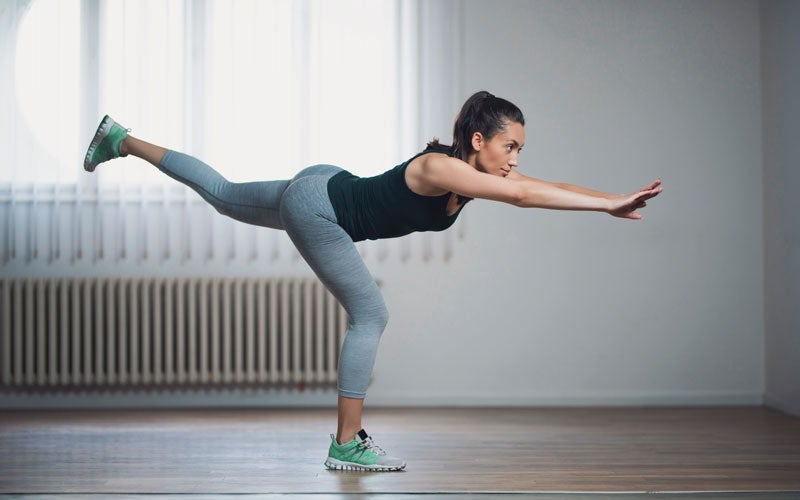
Start by standing upright, with your abs tight. Tilt your upper body forward and slowly lift one leg, keeping it as straight as possible. Keep going until your upper body and leg are parallel to the floor. Your arms can be held at the waist, stretched out along your sides, or extended forward. Hold the position, then return. Repeat the movement with the other leg.
For an advanced version, stand on an uneven surface, such as a folded towel or pillow.
Military Plank
Start on your forearms, with your elbows below your shoulders, abs and glutes tucked. Now come up a notch by placing first one hand, then the other, where your elbows were before – until you are in a high plank supported by your palms. From here, go down again step by step again onto your forearms. Important: Keep your hips parallel to the floor. Work slowly and consciously tighten your abs and glutes to maintain stability.
For more experienced athletes: Perform the military plank on an uneven surface.
Single Arm Plank
Start in a high plank by positioning your hands below your shoulders and lifting yourself so that your body forms a line. Hold the plankfor a few seconds until you gain stability. Now lift one arm without losing stability. The higher you lift and extend your arm, the more tension you’ll need to hold yourself steady.
For something more advanced, lift your opposite leg parallel to the arm.
Lunges
Classic lunges not only work your leg and glute muscles, but also train your balance. Stand with your feet hip width apart and take a wide step forward with one leg. Keep your knee in line with your ankle. Once in a lunge, push off the floor with your front heel to return to the starting position. Switch legs. Try not to wobble and remain stable. To do this, tighten your abs and keep your chest tall.
For advanced athletes: Add weights, like dumbbells, or try placing a sandbag on your neck.
Jumping Lunges
Jumping lunges are cardio, strength, and balance training all in one. Start in a standing position and jump into a lunge. Keep both knees bent, with the one in front in line with your ankle and your thigh in line with the floor. Press firmly off the front heel and switch sides as you jump. The faster you perform the exercise, the more intense the cardio. But make sure you do it correctly. Form first!
For an advanced exercise: Weights can intensify the exercise. For example, hold a dumbbell and extend both arms above your head.
Pistols
Start in an upright position and place your lower right leg above your left knee. Slowly come into a squat position as if you were doing a classic squat or chair position. You can either extend your arms upward or cross your hands in front of your chest. Keep your upper body straight. Stop at the lowest point and slowly straighten up again without losing balance. Switch sides and repeat the movement.
For an advanced exercise, extend your leg forward instead of resting it on your thigh. Pistol squats are a very demanding exercise that requires a lot of training.
The best tools for balance training
Your workout can be made more varied and intense by using different equipment. There’s a wide range of tools to play with imbalance: in addition to the popular suspension straps (TRX), you can use an exercise ball or medicine ball, pads, cushions, balance boards, plank pads, or a stability ball.
Jumping rope also trains your sense of balance, as does exercising on a trampoline. In the park or forest, you can even use a tree trunk to train your balance.
Ideal sports to improve your balance are aerial yoga and flying Pilates, paddleboarding, surfing, slackline, gymnastics, and ballet.
Summary
- Balance exercises can help everyone, no matter their age, to prevent injuries and age-related weaknesses.
- They’re the ideal complement for all sports to improve performance and increase agility.
- Balance is based on three perceptual systems: the eye; the inner ear; and receptors on muscles, joints, and skin; all report instability to the brain.
- The faster your muscles respond to instructions from your brain, the more developed your sense of balance. Balance exercises can increase reaction speed.
- Coordination skills diminish with age, but can be trained with balance exercise.
- In addition to body weight exercises, there is various equipment you can use to train your balance.
Sources for this article
We at foodspring use only high-quality sources, including peer-reviewed studies, to support the facts within our articles. Read our editorial policy to learn more about how we fact-check and keep our content accurate, reliable, and trustworthy.
- https://pubmed.ncbi.nlm.nih.gov/17503879/






















